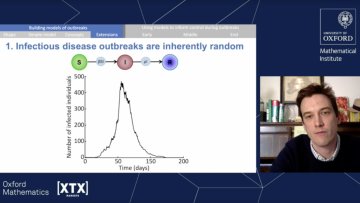An enumerative invariant theory in Algebraic Geometry, Differential Geometry, or Representation Theory, is the study of invariants which 'count' $\tau$-(semi)stable objects $E$ with fixed topological invariants $[E]=\alpha$ in some geometric problem, by means of a virtual class $[{\mathcal M}_\alpha^{\rm ss}(\tau)]_{\rm virt}$ of the moduli spaces ${\mathcal M}_\alpha^{\rm st}(\tau)\subseteq{\mathcal M}_\alpha^{\rm ss}(\tau)$ of $\tau$-(semi)stable objects in some homology theory. Examples include Mochizuki's invariants counting coherent sheaves on surfaces, Donaldson-Thomas type invariants counting coherent sheaves on Calabi-Yau 3- and 4-folds and Fano 3-folds, and Donaldson invariants of 4-manifolds.
We make conjectures on new universal structures common to many enumerative invariant theories. Any such theory has two moduli spaces ${\mathcal M},{\mathcal M}^{\rm pl}$, where my big vertex algebras project http://people.maths.ox.ac.uk/~joyce/hall.pdf gives $H_*({\mathcal M})$ the structure of a graded vertex algebra, and $H_*({\mathcal M}^{\rm pl})$ a graded Lie algebra, closely related to $H_*({\mathcal M})$. The virtual classes $[{\mathcal M}_\alpha^{\rm ss}(\tau)]_{\rm virt}$ take values in $H_*({\mathcal M}^{\rm pl})$. In most such theories, defining $[{\mathcal M}_\alpha^{\rm ss}(\tau)]_{\rm virt}$ when ${\mathcal M}_\alpha^{\rm st}(\tau)\ne{\mathcal M}_\alpha^{\rm ss}(\tau)$ (in gauge theory, when the moduli space contains reducibles) is a difficult problem. We conjecture that there is a natural way to define $[{\mathcal M}_\alpha^{\rm ss}(\tau)]_{\rm virt}$ in homology over $\mathbb Q$, and that the resulting classes satisfy a universal wall-crossing formula under change of stability condition $\tau$, written using the Lie bracket on $H_*({\mathcal M}^{\rm pl})$. We prove our conjectures for moduli spaces of representations of quivers without oriented cycles.
This is joint work with Jacob Gross and Yuuji Tanaka.


